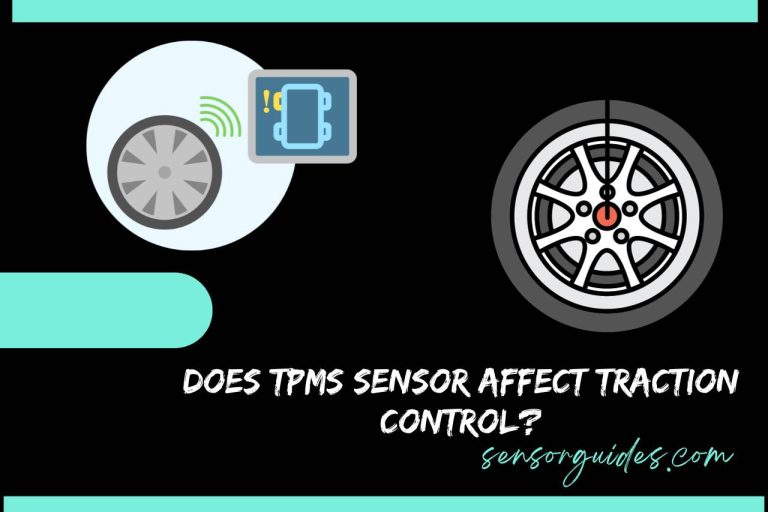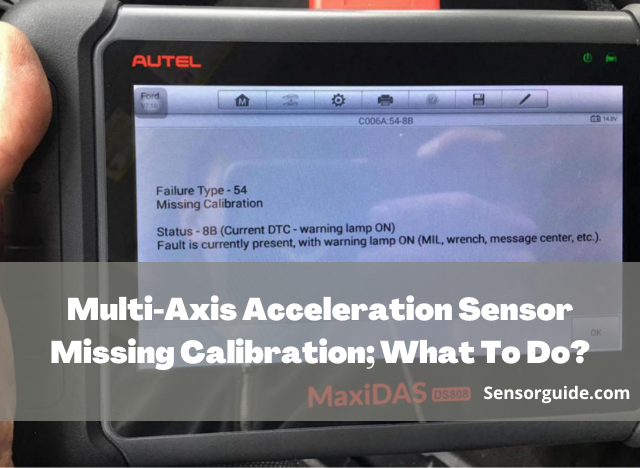6.0 Powerstroke MAP Sensor Symptoms; All Explained
Your 6.0 Powerstroke engine’s MAP (Manifold Absolute Pressure) sensor plays a crucial role in performance. In this article, we’ll explore the key symptoms of a malfunctioning MAP sensor, helping you identify issues that could affect power, fuel economy, and overall drivability. Understanding these symptoms can aid in timely diagnosis and maintenance for your vehicle’s optimal functioning. Welcome to SensorGuides.
Table of Contents
What does the map sensor do on a 6.0 Powerstroke?
The Manifold Absolute Pressure (MAP) sensor in a 6.0 Powerstroke engine measures the air pressure within the intake manifold. It plays a crucial role in engine performance by providing data to the Engine Control Module (ECM).
The ECM uses this information to optimize the air-fuel mixture and ignition timing, ensuring efficient combustion. When the vehicle accelerates, the MAP sensor detects changes in manifold pressure, allowing the ECM to adjust fuel injection and timing accordingly, thus preventing engine knock and maximizing power output.
Accurate MAP sensor readings are vital for maintaining power, fuel efficiency, and overall drivability in a 6.0 Powerstroke engine.
What are 6.0 Powerstroke MAP sensor symptoms?
Certainly, here are five common symptoms of a faulty MAP (Manifold Absolute Pressure) sensor in a 6.0 Powerstroke engine, explained in detail:
Loss of Power
One of the primary symptoms of a malfunctioning MAP sensor is a noticeable loss of engine power, especially during acceleration. This occurs because the ECM (Engine Control Module) relies on accurate air pressure information from the MAP sensor to determine the optimal air-fuel mixture.
When the MAP sensor fails, it provides incorrect data to the ECM, leading to an improper air-fuel ratio and reduced engine performance.
Poor Fuel Economy
A faulty MAP sensor can cause the engine to run too rich, meaning it gets excessive fuel relative to the actual air intake. This results in poor fuel economy because the ECM thinks there’s less air in the intake manifold than there actually is, causing it to inject more fuel than necessary for combustion.
Rough Idle
When the MAP sensor provides inaccurate air pressure readings, the ECM struggles to maintain a consistent air-fuel mixture. This inconsistency can lead to a rough idle, causing the engine to run unevenly or feel shaky at rest. Irregular fuel injection and ignition timing can contribute to this symptom.
Hard Starting
Faulty MAP sensor readings can make it difficult to start the engine, especially when it’s cold. If the ECM receives inaccurate data about the air pressure in the intake manifold, it may inject too much fuel, leading to flooding and making it challenging to start the engine.
Check Engine Light
A malfunctioning MAP sensor is typically detected by the ECM, triggering the check engine light on the dashboard. Modern vehicles are equipped with onboard diagnostics (OBD-II) systems that monitor various engine sensors, including the MAP sensor. When the ECM detects inconsistent or out-of-range MAP sensor data, it stores a trouble code and illuminates the check engine light to alert the driver to a potential issue.
If you experience any of these symptoms in your 6.0 Powerstroke engine, it’s essential to have the MAP sensor inspected and potentially replaced by a qualified technician to prevent further engine problems.
How to replace the 6.0 Powerstroke MAP Sensor?
Here’s a step-by-step guide on how to replace the MAP (Manifold Absolute Pressure) sensor in a 6.0 Powerstroke engine:
- Gather Materials:
- New MAP sensor
- Wrench
- Screwdriver
- Clean engine oil (for the sensor gasket)
- Safety Precautions:
- Ensure the engine is turned off and cool.
- Disconnect the vehicle’s battery to prevent electrical accidents.
- Locate the MAP Sensor:
- The MAP sensor is typically located near the rear of the engine, on the passenger side. Refer to your vehicle’s service manual if needed.
- Disconnect Electrical Connector:
- Carefully disconnect the electrical connector from the MAP sensor. This usually involves pressing a tab or releasing a latch to disconnect the wiring harness.
- Remove the Old MAP Sensor:
- Use the wrench to gently loosen and remove the old MAP sensor from the engine block. Be cautious not to damage the sensor or the surrounding components.
- Apply Oil to the New Gasket:
- Apply a thin coat of clean engine oil to the gasket on the new MAP sensor. This helps create a proper seal when you install it.
- Install the New MAP Sensor:
- Carefully insert the new MAP sensor into the mounting location on the engine block where the old sensor was removed.
- Secure the New MAP Sensor:
- Use the wrench to securely tighten the new MAP sensor onto the engine block. Ensure it’s snug but not over-tightened, as you can damage the sensor or the threads on the engine block.
- Reconnect the Electrical Connector:
- Reattach the electrical connector to the new MAP sensor. You should hear a click or feel a secure connection when it’s properly attached.
- Double-Check Connections:
- Ensure that both the electrical connector and the sensor are securely in place.
- Reconnect the Battery:
- Reconnect the vehicle’s battery to restore power.
- Start the Engine:
- Start the engine and monitor for any leaks or unusual behavior.
- Check for Leaks:
- Inspect the area around the new MAP sensor for any signs of oil or vacuum leaks. If you notice any, address them immediately.
- Clear Error Codes (if needed):
- If the previous faulty MAP sensor triggered the check engine light, you may need to clear error codes using an OBD-II scanner to turn off the warning light.
By following these steps carefully, you can successfully replace the MAP sensor in your 6.0 Powerstroke engine. If you’re unsure about any aspect of the replacement process, it’s advisable to consult your vehicle’s service manual or seek assistance from a qualified technician.
What are 6.0 Powerstroke MAP sensor readings?
Here’s a comprehensive guide to interpreting MAP sensor readings in different scenarios:
- Key On, Engine Off (KOEO):
- Normal MAP sensor reading: 14 PSI (750 mV)
- The engine is off at this stage, and the reading should be consistent. It serves as a reference point for system integrity.
- Idle:
- Typical MAP sensor reading: 15-20 PSI (750-1000 mV)
- At idle, the engine requires a steady air-fuel mixture, and the MAP sensor reading should remain within this range for stable idling.
- Acceleration:
- Typical MAP sensor reading: 20-30 PSI (1000-1500 mV)
- During acceleration, the engine demands more air, increasing MAP sensor readings as the ECM adjusts fuel injection and timing for added power.
- Wide Open Throttle (WOT):
- Typical MAP sensor reading: 30+ PSI (1500+ mV)
- At full throttle (WOT), the MAP sensor reading rises significantly as the engine requires maximum airflow for peak performance.
Interpreting these MAP sensor readings is crucial for diagnosing engine issues. A low reading could indicate a vacuum leak or a failing sensor, while a high reading might suggest a restriction in the intake system or issues with the boost pressure sensor.
Using a scan tool to monitor MAP sensor readings in real-time or over various driving conditions can help pinpoint problems and ensure your 6.0 Powerstroke engine operates optimally. If uncertain, consult a qualified technician to diagnose and resolve any MAP sensor-related issues thoroughly.
How to clean 6.0 Powerstroke MAP sensor?
Cleaning the MAP (Manifold Absolute Pressure) sensor in a 6.0 Powerstroke engine can potentially improve its performance if the sensor is contaminated or dirty. Here are the steps to clean the MAP sensor:
Materials Needed:
- Electronic parts cleaner or mass airflow sensor cleaner (MAF cleaner)
- Soft-bristle brush (e.g., paintbrush)
- Latex gloves (optional)
- Safety goggles (optional)
Procedure:
- Safety Precautions:
- Ensure the engine is turned off and cool to avoid burns or injuries.
- Optionally, wear latex gloves and safety goggles for protection.
- Locate the MAP Sensor:
- The MAP sensor is typically located near the rear of the engine, on the passenger side. Refer to your vehicle’s service manual for precise location details if needed.
- Disconnect the Electrical Connector:
- Carefully disconnect the electrical connector from the MAP sensor. This is usually a simple press-and-release type of connector.
- Remove the MAP Sensor:
- Gently remove the MAP sensor from its mounting location. It may be secured with screws or clips, so be cautious not to damage it or surrounding components.
- Inspect the Sensor:
- Examine the sensor for visible dirt, debris, or oil residue. If there’s substantial contamination, cleaning may be worthwhile.
- Cleaning the MAP Sensor:
- Spray electronic parts cleaner or MAF cleaner onto the sensor’s sensing element (the part that measures pressure). Hold the sensor with the sensing element facing downward to prevent cleaner from entering the electrical connector.
- Gently Brush Away Contaminants:
- Use a soft-bristle brush (like a clean paintbrush) to lightly and carefully brush away any remaining dirt or debris from the sensing element.
- Allow to Dry:
- Let the sensor air-dry completely. This usually takes just a few minutes, but you want to ensure there’s no cleaner residue before reinstallation.
- Reinstall the MAP Sensor:
- Carefully place the cleaned MAP sensor back into its mounting location. Secure it as necessary with screws or clips.
- Reconnect the Electrical Connector:
- Reattach the electrical connector to the MAP sensor. Ensure it clicks into place for a secure connection.
- Test Your Vehicle:
- Start your engine and check for any performance improvements. Monitor for any changes in the MAP sensor reading using a scan tool if available.
Cleaning the MAP sensor is a relatively straightforward task, but it’s not always necessary. If your engine performance issues persist despite cleaning the sensor, replacing it may be more prudent. Always refer to your vehicle’s service manual for specific instructions and consult a qualified technician if you have any doubts or if problems persist after cleaning.






